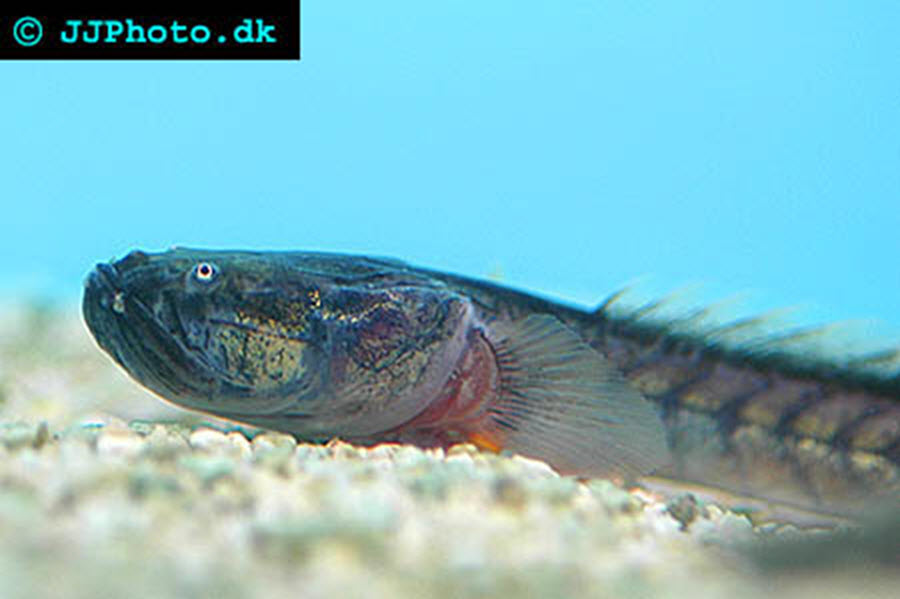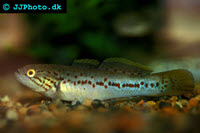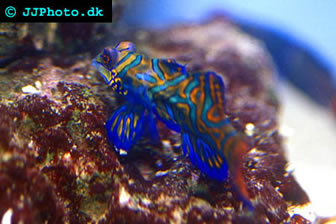Goby fish

Species guides
Indepth species guides:
Species profiles
Basic care guides:
Popular Goby fish
Goby Fish information
Goby Fish
Goby fish are found in the family Gobiidae, a very large family that contains more than 2000 different fish species. In the family Gobiidae, you will find a lot of very small fish species that do not grow larger than 10 centimetres (4 inches), but there exists several large goby species as well. A few of the smallest vertebrates in the world are Goby fish, e.g. the species found in the genera Pandaka, Tyson and Trimmaton. The goby species in these genera are smaller than 1 centimetre (3/8 inches) as adults. As mentioned above, you can find large Goby fish as well, such as several species in the genera Gobioides and Periophthalmodon. These large Goby fish can grow up to 30 centimetres (1 foot) long.
The typical habitat for a goby is shallow marine environments, such as coral reefs and seagrass meadows. They are also common in regions where rivers empty into the sea and in mangrove swamps. A few goby species are found in freshwater, such as the Australian desert goby (Chlamydogobius eremius),the Asian river goby(Rhinogobius spp.) and the European freshwater goby (Padogobius bonelli).
A common characteristic for the various goby species are a pelvic fin that has developed into a disc-shaped sucker. When you keep Goby fish in your aquarium, you will often see them attached to the glass or to rocks and wood. This sucker is similar to the suckers found on many other fishes, e.g. the lumpfish, but the Goby fish are not closely related to the rest of the sucking fishes. The fact that many different fish groups have suckers is an example of convergent evolution.
There is a group of fishes that are commonly referred to as “Sleeper Goby fish”, but they are not actually Goby fish. Instead of being a part of the family Gobiidae, they belong to a closely related family named Eleotridae. Unlike the true Goby fish, the sleeper Goby fish have no fused pelvic fin. Apart from this distinction, they are very similar to true Goby fish when it comes to size, body shape and habits.
Many different goby species are commonly kept by aquarists. The so called Bumblebee Goby fish found in the genus Brachygobius do not grow very large and thereby easy to keep even in small aquariums. They will also add colour to the aquarium and do not require a lot of pampering to do well. Provide them with tropical temperatures and an alkaline pH. Bumblebee Goby fish are usually kept in freshwater aquariums, but they can be kept in slightly brackish conditions as well. Ideally provide your Bumblebee Goby fish with live or frozen meaty foods. Make sure that the Bumblebee Goby fish actually get some food, since faster species might gulp down everything before the Bumblebee goby get a chance to eat anything. Bumblebee Goby fish are usually very peaceful and will do well in a community aquarium, as long as they are kept with non-aggressive species.
The so called Mudskippers make up another group of Goby fish kept by aquarists. They are traditionally ascribed to the subfamily named Oxudercinae. In the wild, you will find Mudskippers in tropical and subtropical areas affected by tidal waters, e.g. mangrove forests and mudflats. When the water is drawn out to sea, the Mudskippers stay and breathe oxygen directly from their skin. Just like frogs, the Mudskipper Goby fish can absorb oxygen through the skin. Another adaptation to the tidal landscape are strong pectoral fins that work as basic legs when the Mudskipper goby needs to traverse areas of semi-dry land. To prevent dehydration, the Mudskipper can dig a burrow and hide inside it until the water returns.


